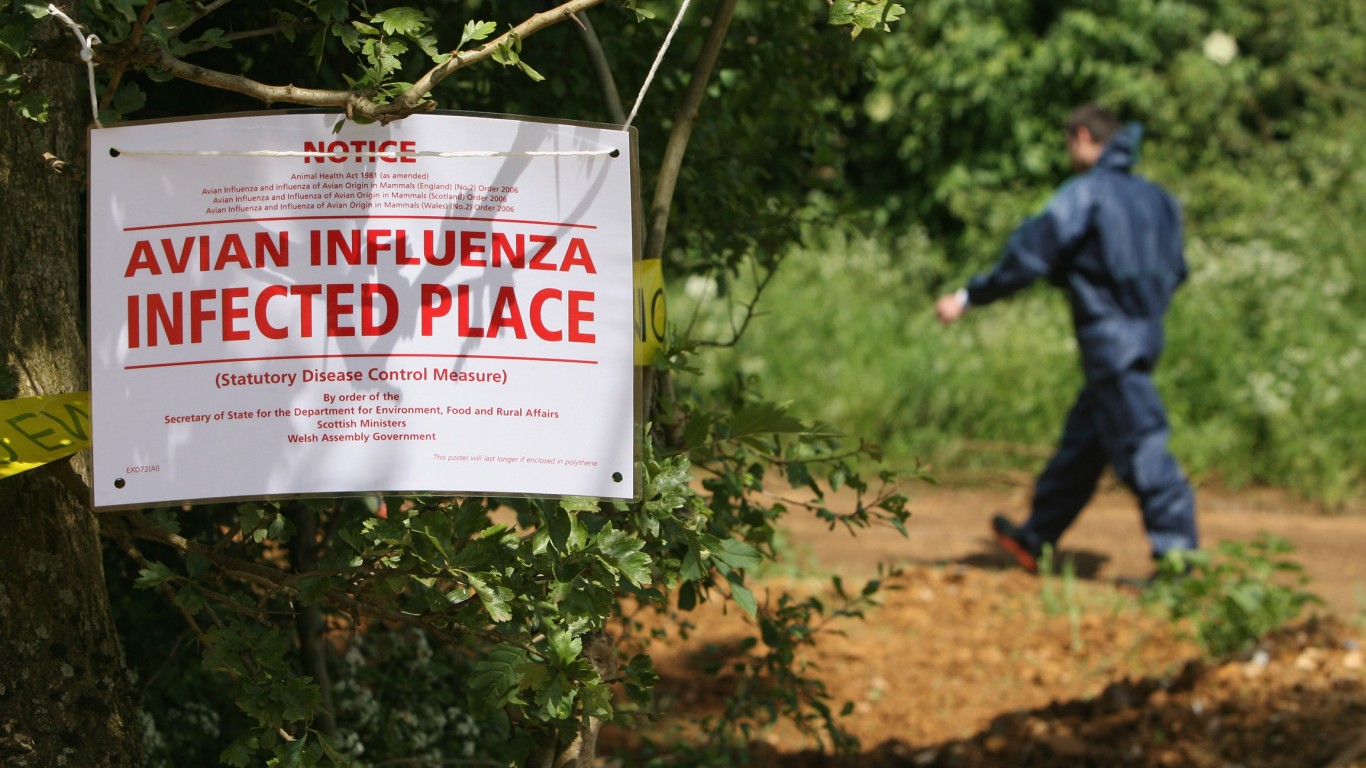
Humans have been fighting disease since long before our genus evolved into Homo sapiens. The most recent example is COVID-19. Though the latest variant of the virus that causes the disease is very contagious, its fatality rate is relatively low in comparison with pathogens. (Here’s how COVID fatalities compare with those of other diseases.)
Antibiotics, vaccines, and antiviral drugs have been effective in preventing infections from spreading widely. Smallpox, for example, has been eradicated. However, as humans and our immune systems evolve, so do deadly pathogens. Some, such as Ebola, have jumped from animals to humans in recent decades, causing large outbreaks.
To determine the deadliest pathogens on Earth, 24/7 Tempo ranked viruses, bacteria, amoebas, and other potentially lethal pathogens according to their fatality rates in humans using information from Live Science and CBS News. Diseases with causes that are yet to be determined were not considered.
Click here to see the deadliest pathogens on earth
The mortality rate for any disease varies depending on access to vaccines and medical help. Some of these pathogens on the list – such as MERS or tuberculosis – spread from person to person. Others come from infected substances – even water – or from animals or microscopic organisms. (These are the 20 worst epidemics and pandemics in history.)

22. Tuberculosis
> Mortality rate: 15.0%
> Type of pathogen: Bacteria
[in-text-ad]
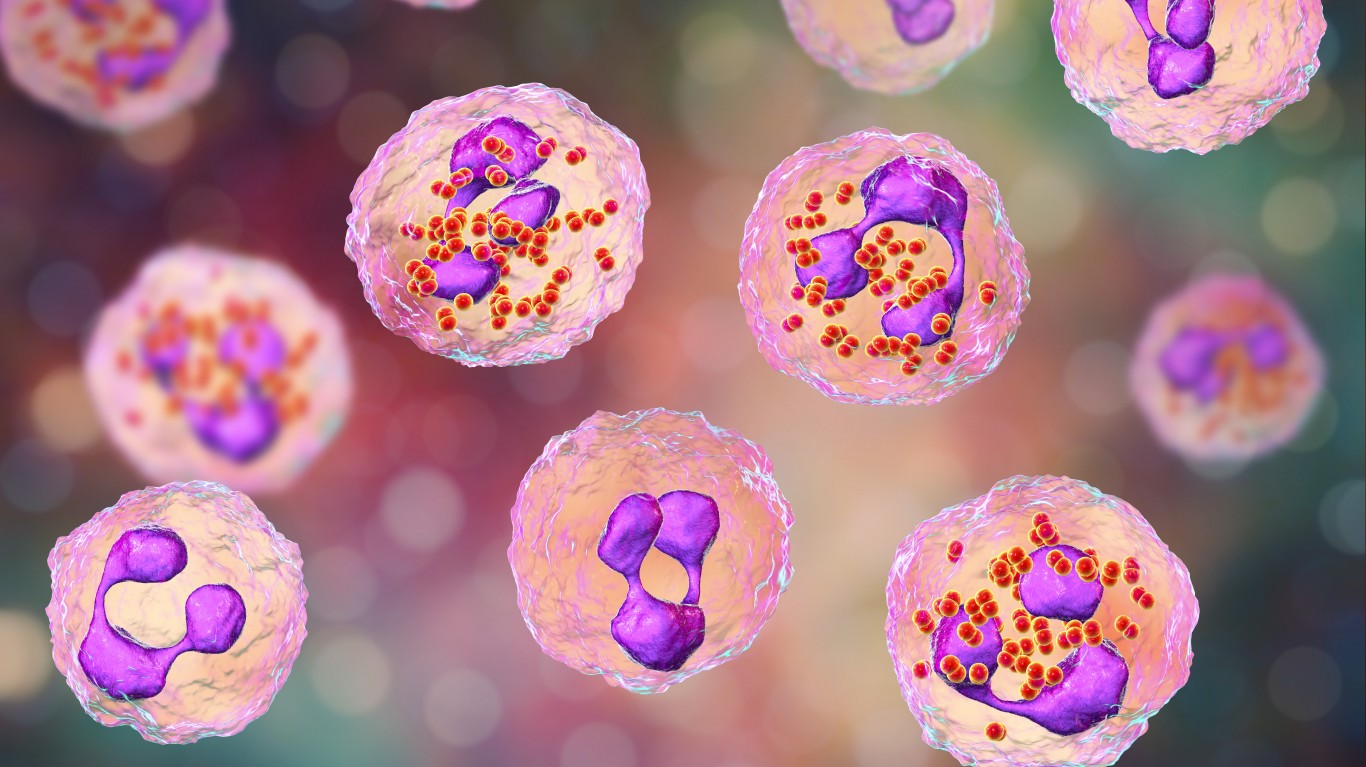
22. Meningococcal meningitis
> Mortality rate: 15.0%
> Type of pathogen: Bacteria
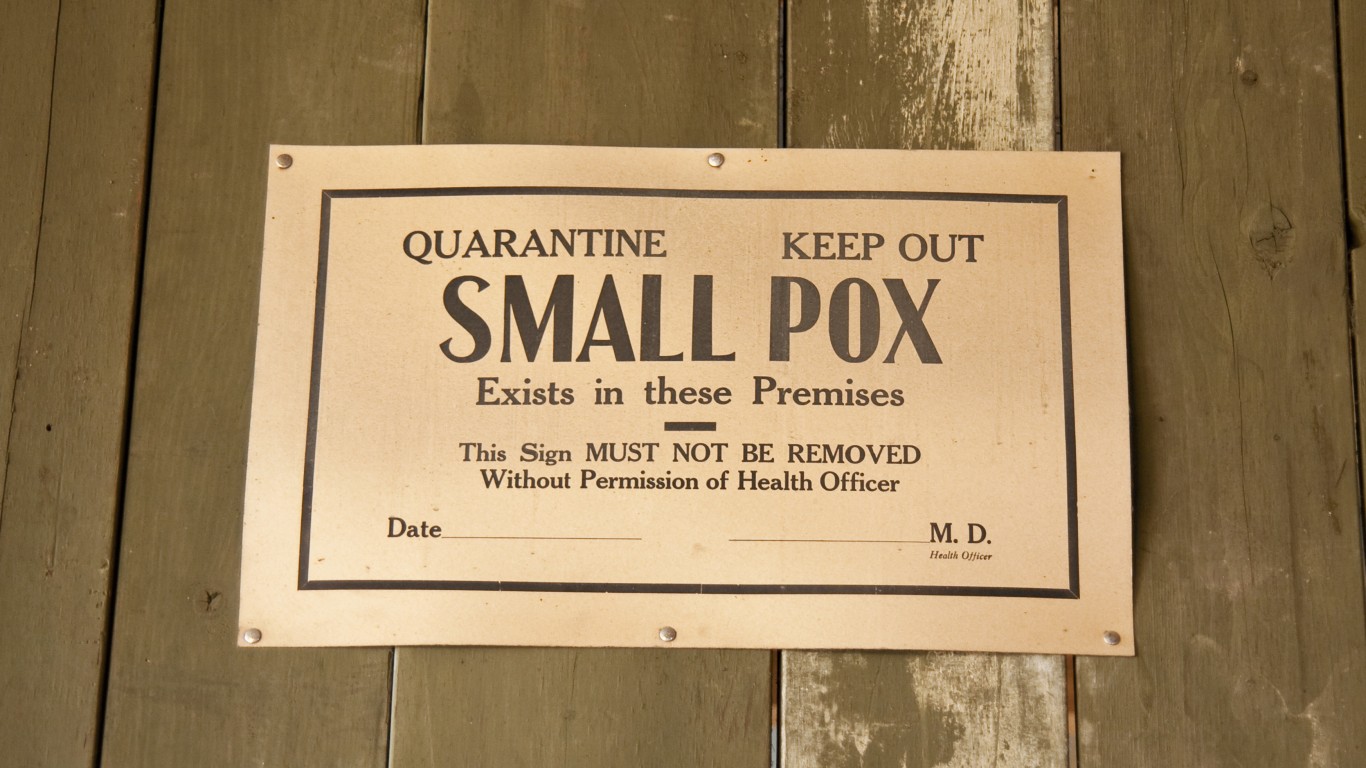
17. Smallpox
> Mortality rate: 30.0%
> Type of pathogen: Virus
17. Crimean-Congo hemorrhagic fever
> Mortality rate: 30.0%
> Type of pathogen: Virus
[in-text-ad-2]
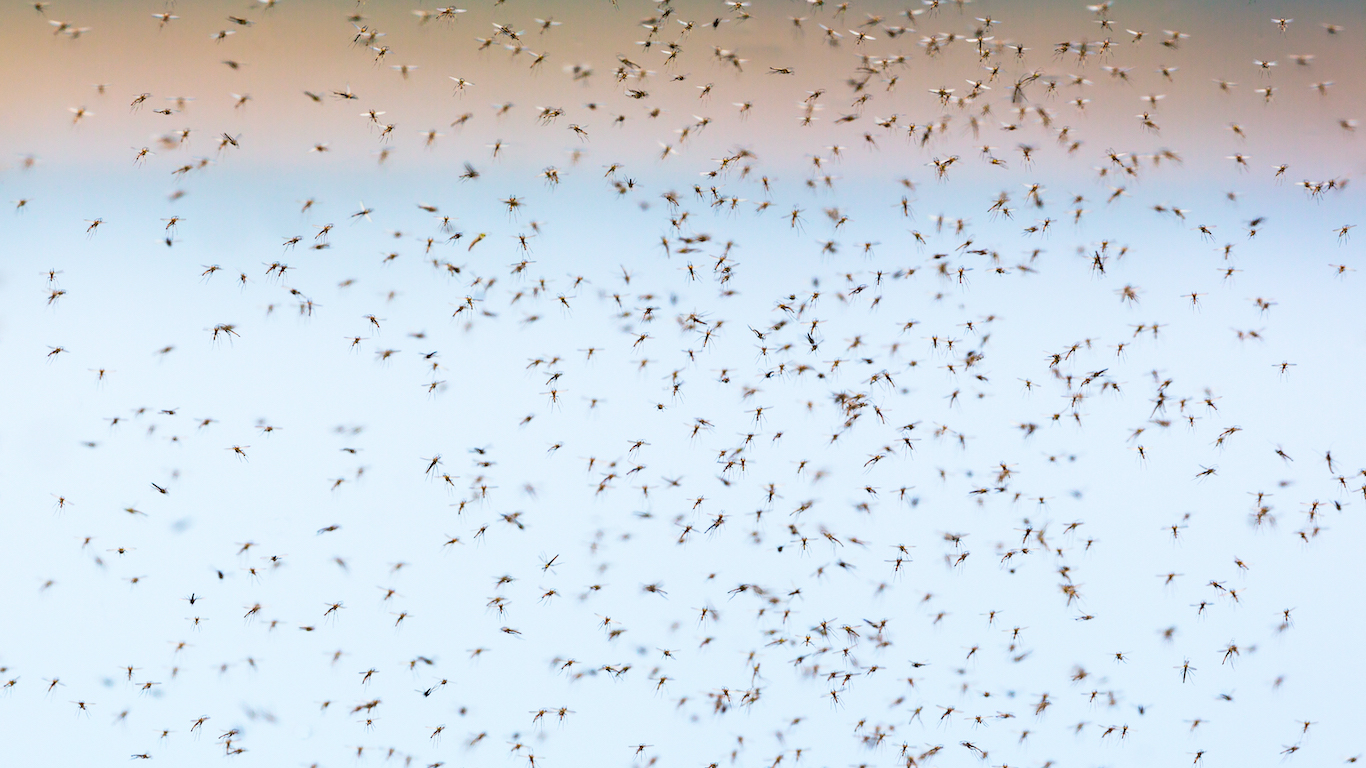
17. Eastern equine encephalitis
> Mortality rate: 30.0%
> Type of pathogen: Virus
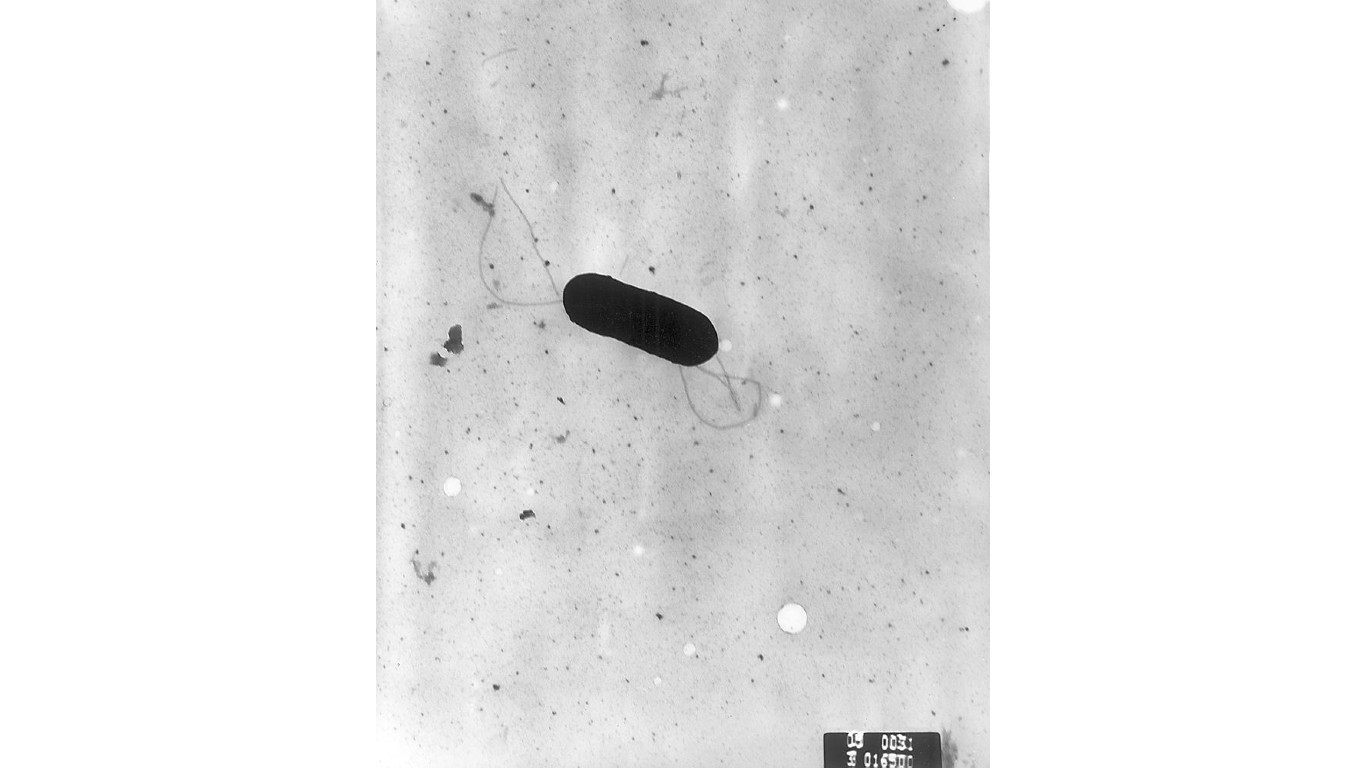
17. Invasive listeria
> Mortality rate: 30.0%
> Type of pathogen: Bacteria
[in-text-ad]
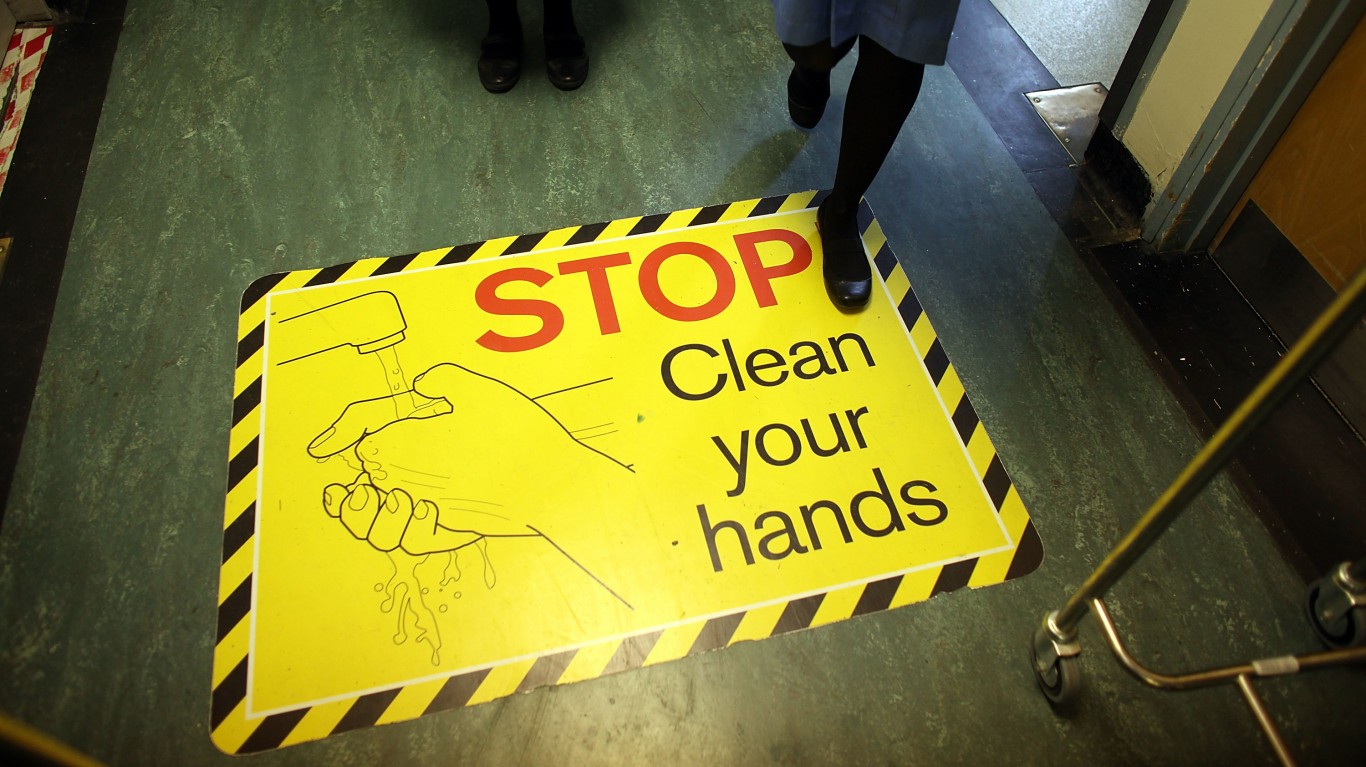
17. Staphylococcus aureus
> Mortality rate: 30.0%
> Type of pathogen: Bacteria
16. Invasive aspergillosis
> Mortality rate: 30.2%
> Type of pathogen: Fungus
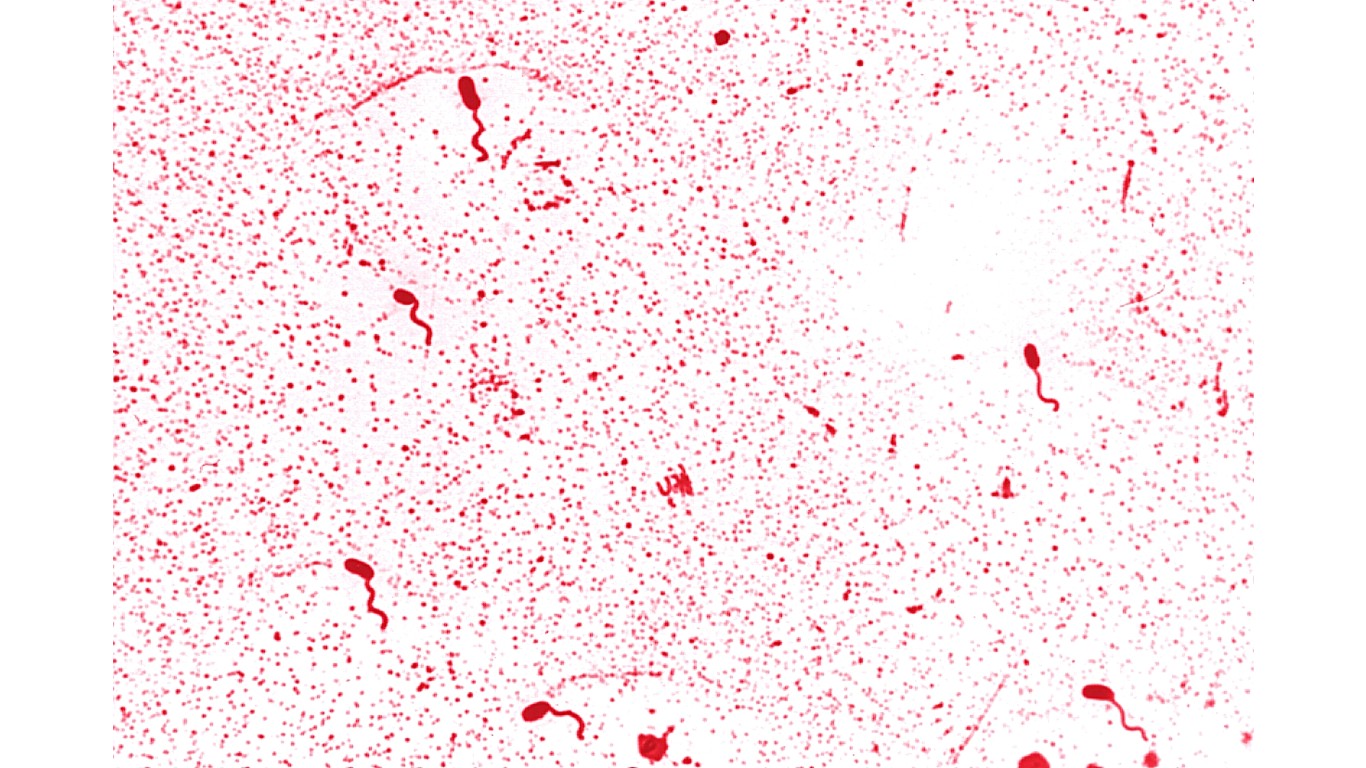
15. Vibrio illness
> Mortality rate: 34.2%
> Type of pathogen: Bacteria
[in-text-ad-2]

14. MERS (Middle East Respiratory Syndrome)
> Mortality rate: 34.4%
> Type of pathogen: Virus
13. Hantavirus
> Mortality rate: 36.0%
> Type of pathogen: Virus
[in-text-ad]
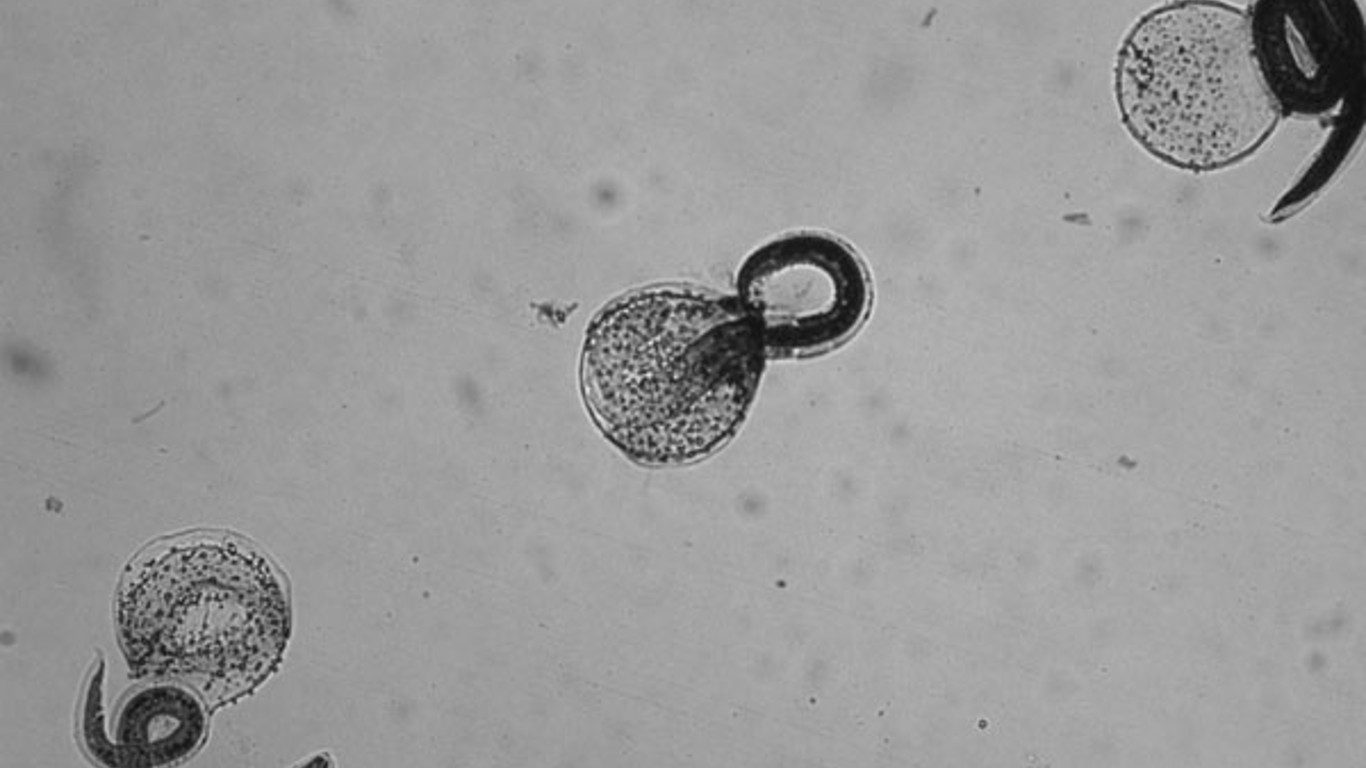
12. Baylisascariasis
> Mortality rate: 38.5%
> Type of pathogen: Parasite

11. Glanders
> Mortality rate: 40.0%
> Type of pathogen: Bacteria
10. Monkey B Virus
> Mortality rate: 42.0%
> Type of pathogen: Virus
[in-text-ad-2]
9. African trypanosomiasis
> Mortality rate: 42.5%
> Type of pathogen: Parasite
7. Marburg virus
> Mortality rate: 50.0%
> Type of pathogen: Virus
[in-text-ad]
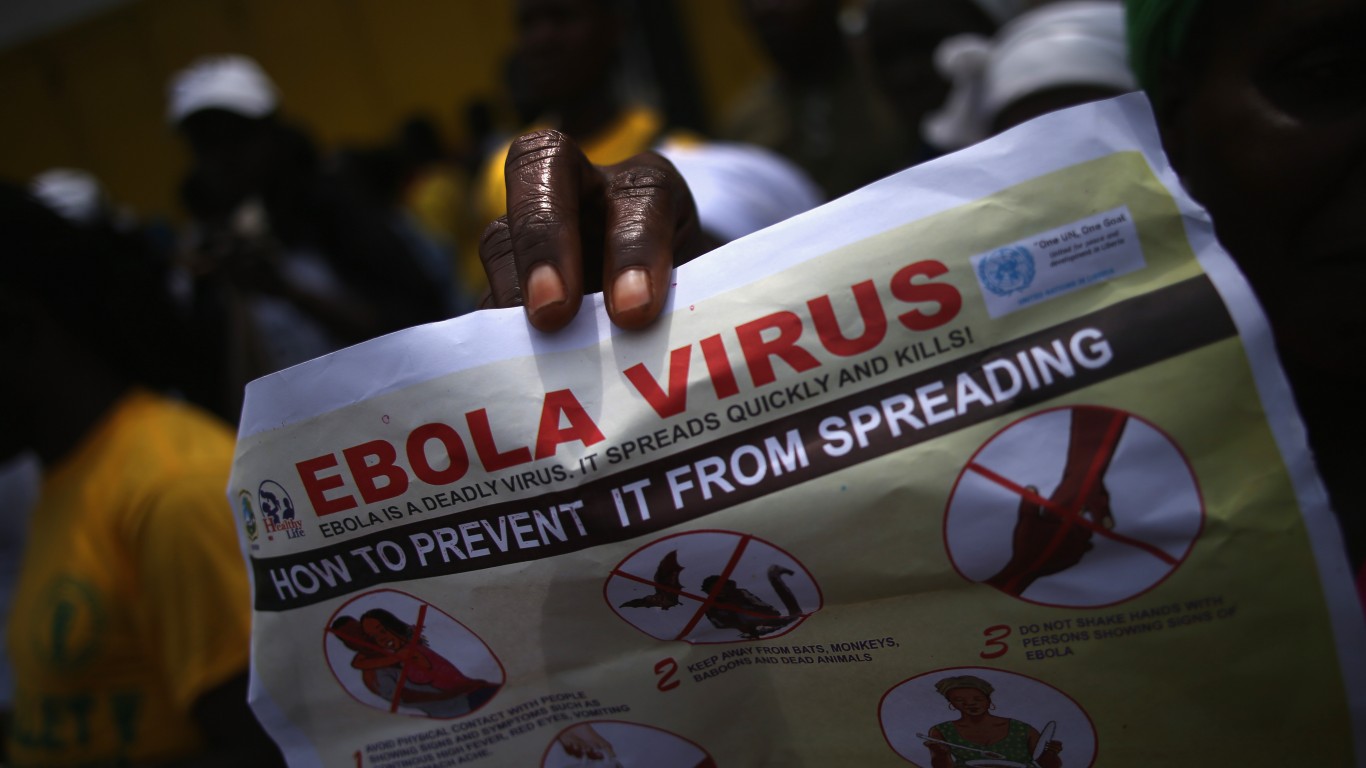
7. Ebola virus
> Mortality rate: 50.0%
> Type of pathogen: Virus
6. Hendra virus
> Mortality rate: 57.0%
> Type of pathogen: Virus

5. Bird flu
> Mortality rate: 60.0%
> Type of pathogen: Virus
[in-text-ad-2]
4. Nipah virus
> Mortality rate: 75.0%
> Type of pathogen: Virus
3. Naegleria fowleri (brain-eating amoeba)
> Mortality rate: 95.0%
> Type of pathogen: Amoeba
[in-text-ad]
2. Balamuthia encephalitis
> Mortality rate: 98.0%
> Type of pathogen: Amoeba

1. Rabies
> Mortality rate: 99.9%
> Type of pathogen: Virus
100 Million Americans Are Missing This Crucial Retirement Tool
The thought of burdening your family with a financial disaster is most Americans’ nightmare. However, recent studies show that over 100 million Americans still don’t have proper life insurance in the event they pass away.
Life insurance can bring peace of mind – ensuring your loved ones are safeguarded against unforeseen expenses and debts. With premiums often lower than expected and a variety of plans tailored to different life stages and health conditions, securing a policy is more accessible than ever.
A quick, no-obligation quote can provide valuable insight into what’s available and what might best suit your family’s needs. Life insurance is a simple step you can take today to help secure peace of mind for your loved ones tomorrow.
Click here to learn how to get a quote in just a few minutes.
Thank you for reading! Have some feedback for us?
Contact the 24/7 Wall St. editorial team.
 24/7 Wall St.
24/7 Wall St.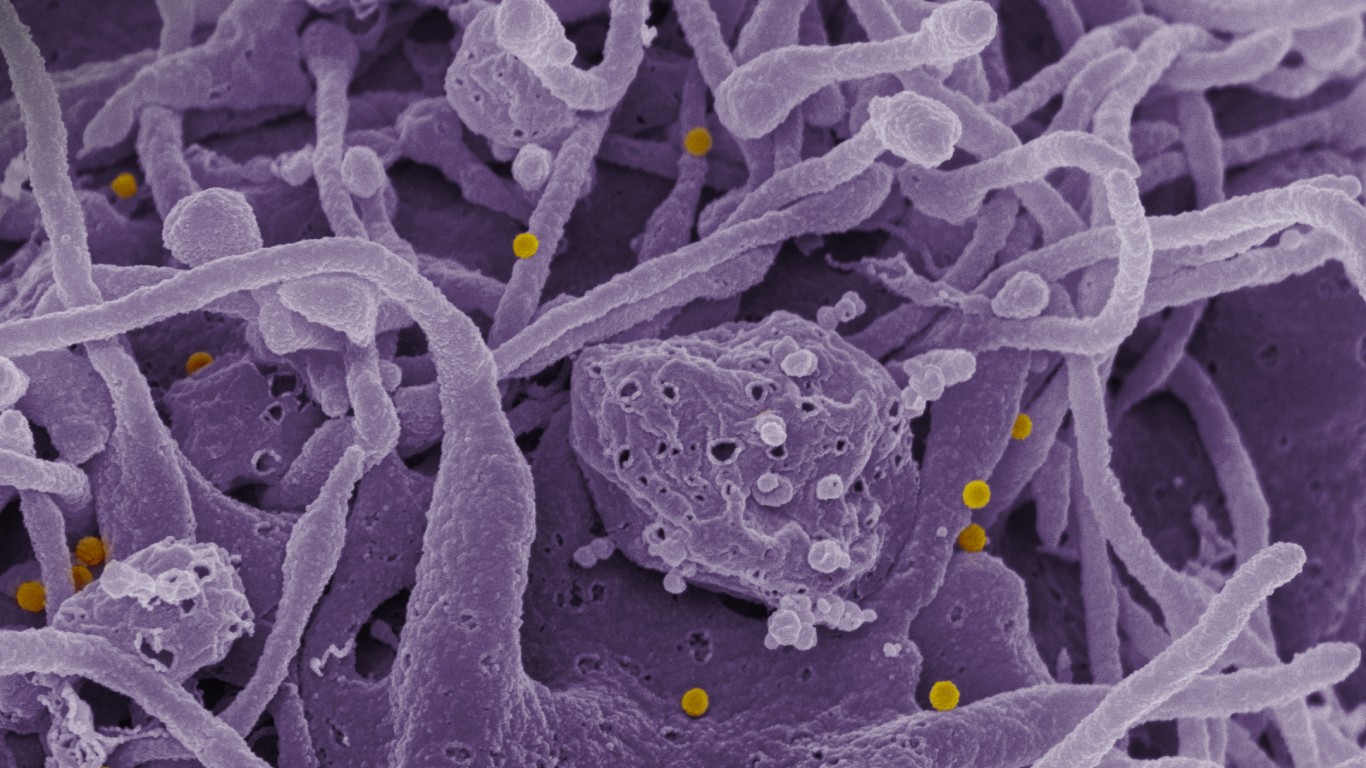
 24/7 Wall St.
24/7 Wall St.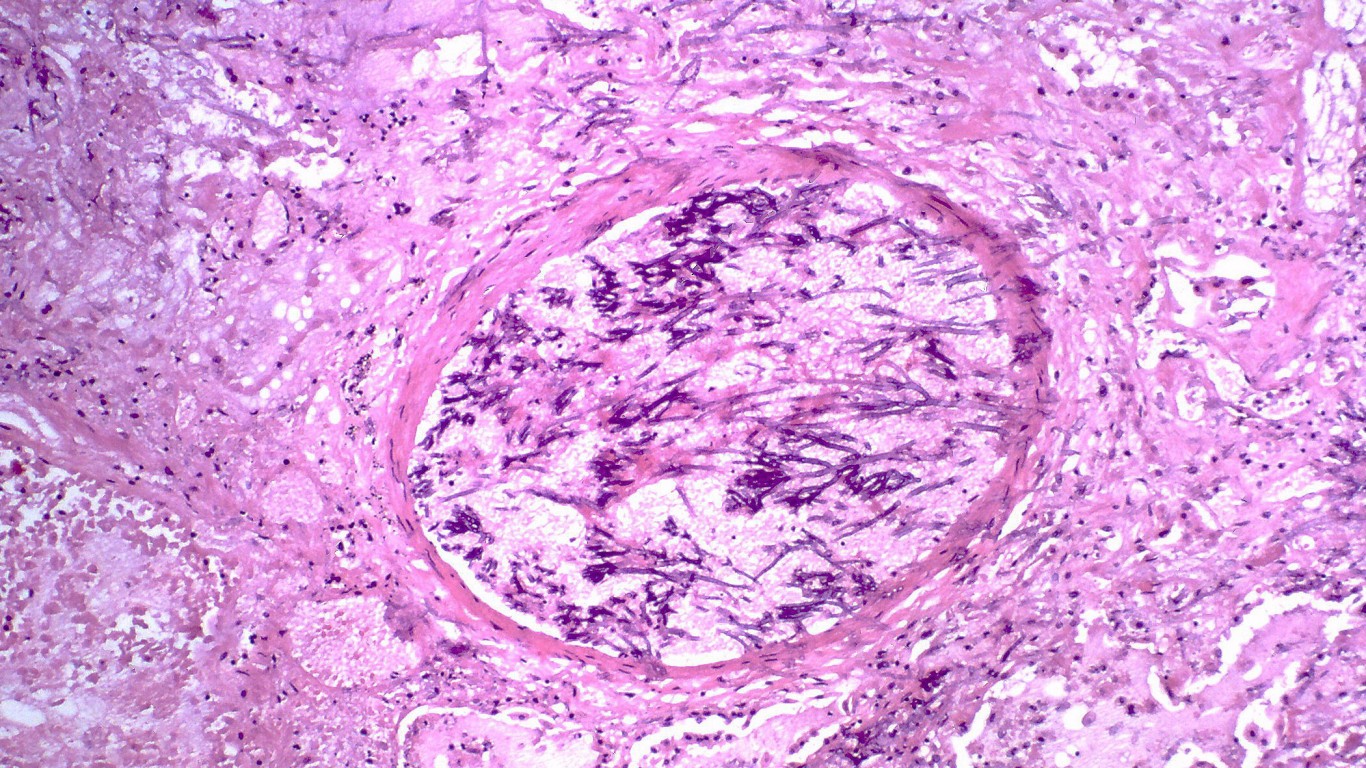


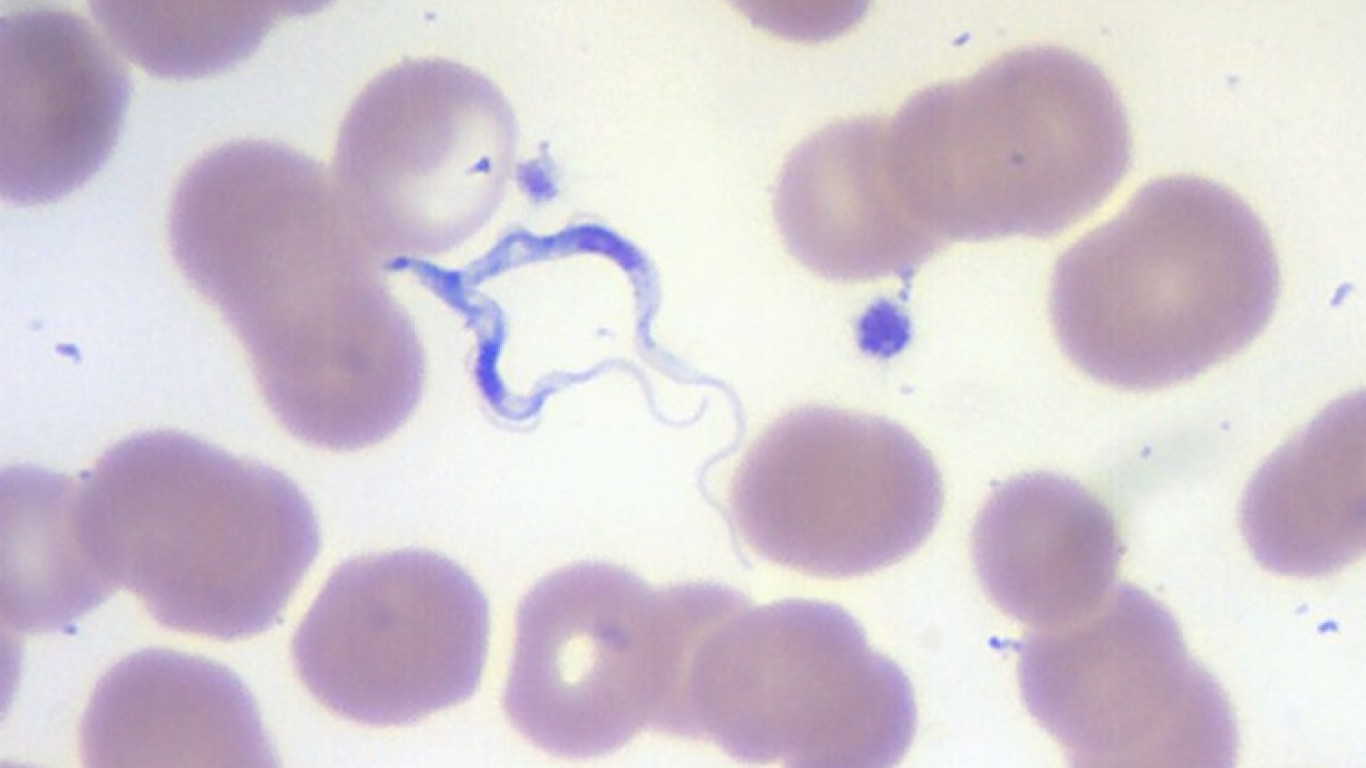
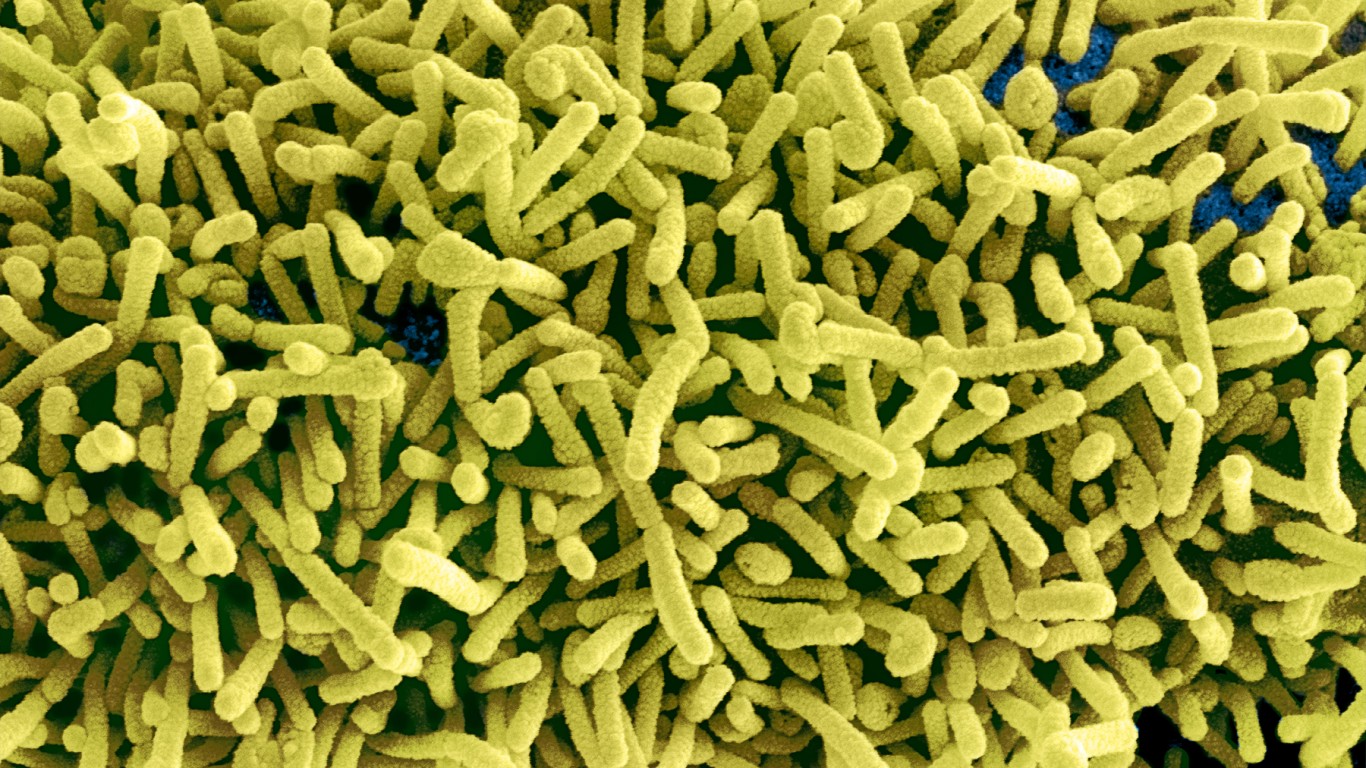
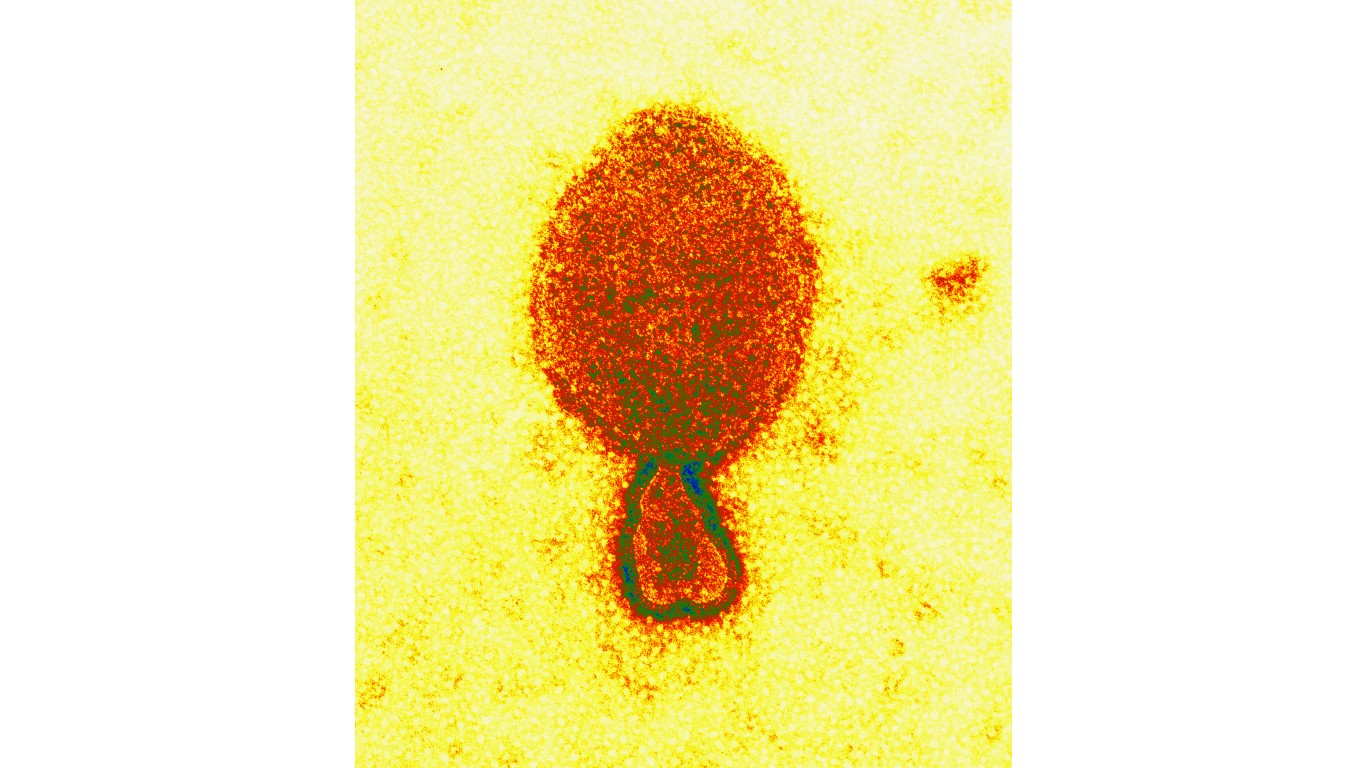
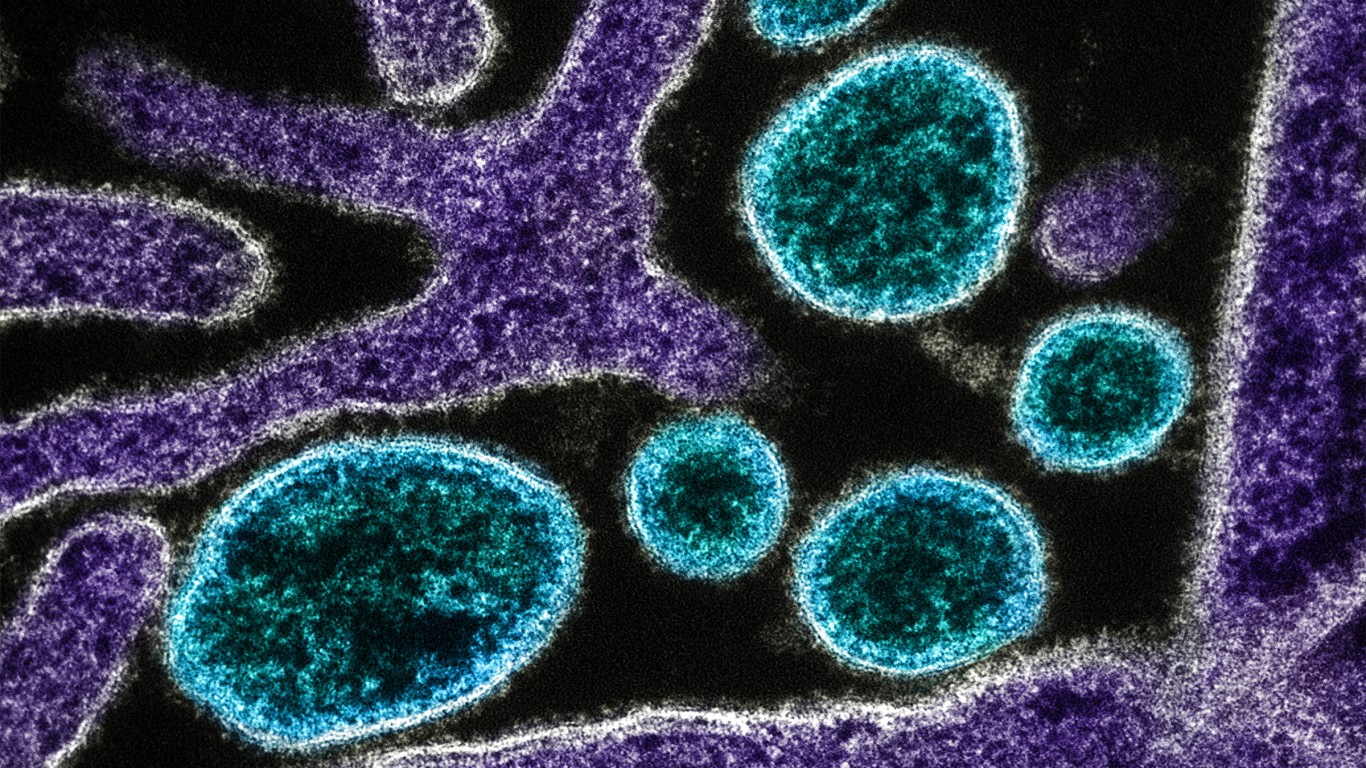

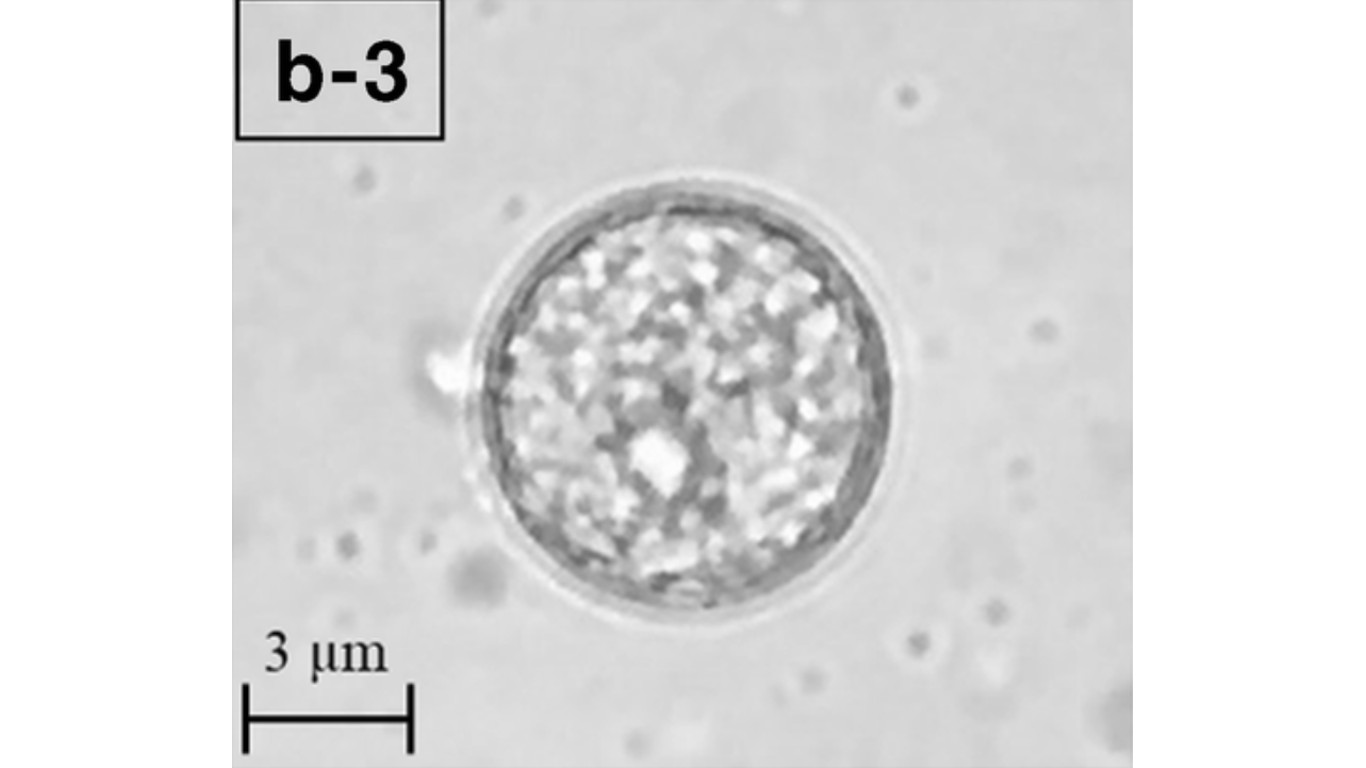
 24/7 Wall St.
24/7 Wall St.


